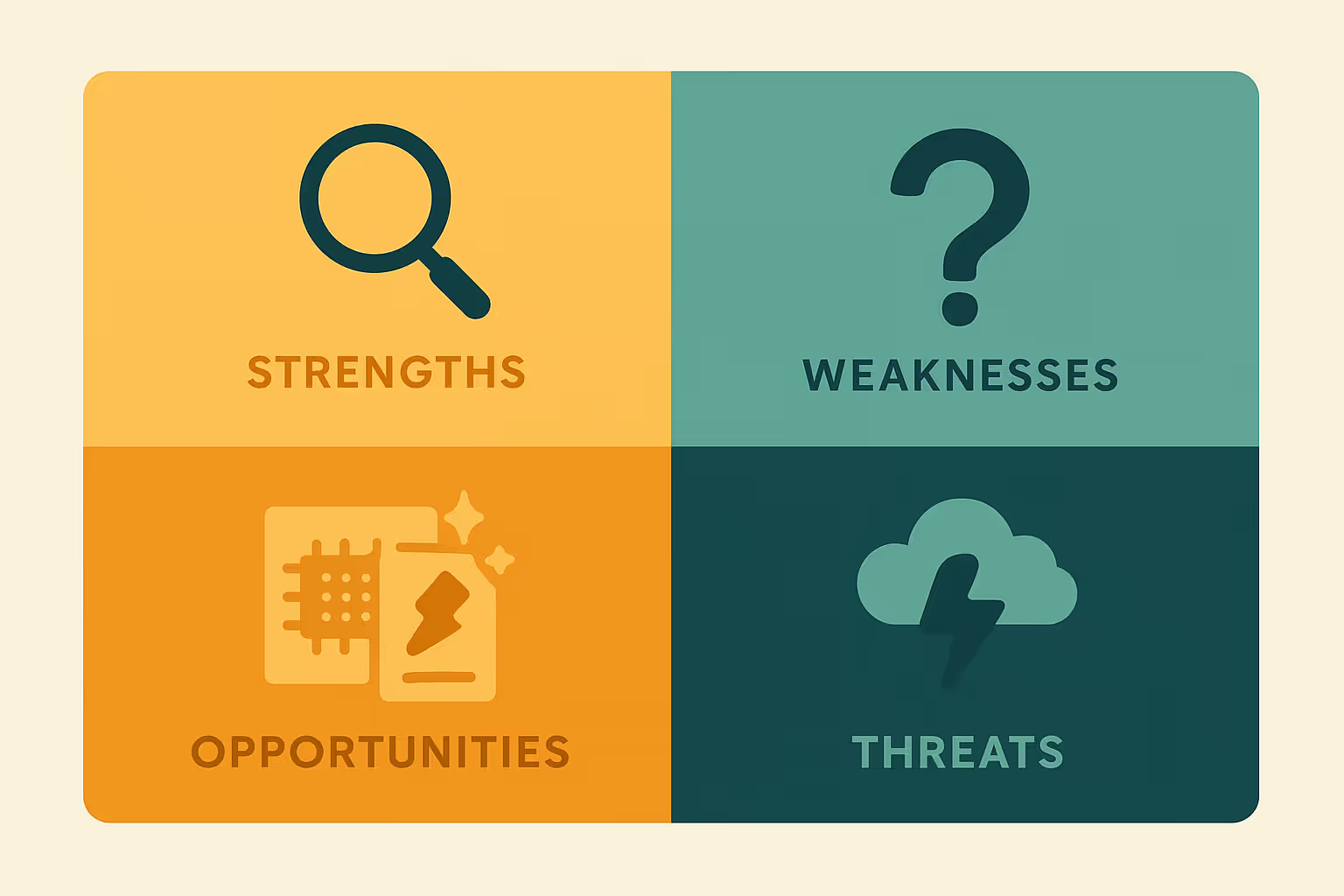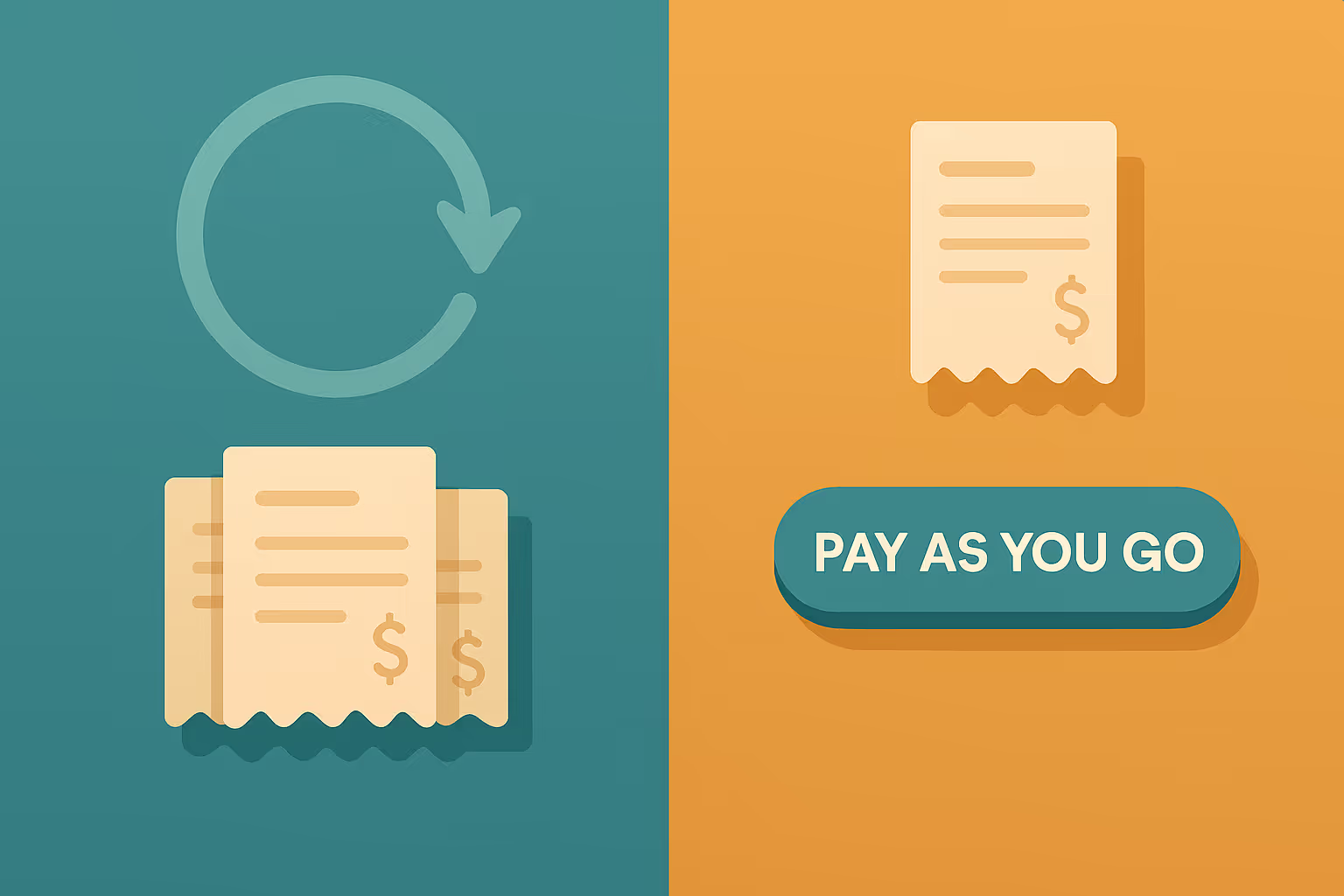Whether you’re a SaaS company, content creator, or digital platform holder, it can be a struggle to decide the right monetization model for your product. Do you want to lean into the community-based aspects of subscriptions or empower your users to determine your product’s value with a pay-per-use model? Both are viable, but it all depends on how you want to align your business. In this post, we’ll break down pay-per-use vs. subscription models and explain the best use cases for each of these models.
Understanding the Two Models

In the next section, we’ll differentiate between two of the most popular monetization models, the subscription model and the pay-per-use model.
What Is a Subscription Model?
A subscription model is a monetization system where a user pays a fixed, regular monthly or annual price to access your product or service. The customer then pays for as long as they want to use the product and service, and has the option to renew or cancel at any time.
Subscription models are now pervasive in various industries, ranging from food services to video streaming. By the end of 2025, the global subscription economy market size is estimated to reach 1.5 trillion.
What Is a Pay-Per-Use Model?
A pay-per-use model, or usage-based pricing, is when a user only pays for a product or service when they use or access it. The definition of usage depends on the individual product, though. It’s a dynamic model that adapts to your customer’s needs and matches pricing with the received value.
Companies in industries like cloud computing services, cell phone data plans, and project management software are increasingly adopting pay-per-use models. And it’s often the norm for SaaS businesses to focus some part of their business model on usage-based pricing.
Subscription Model: SWOT Analysis

In the next section, we’ll offer a SWOT analysis of the subscription model that covers its strengths, weaknesses, opportunities, and threats.
Strengths
With its predictable income and built-in loyalty, the subscription business model lends itself to businesses and creators who need to fund extensive growth plans or those who come in with previous brand recognition. They’re often perceived as more sustainable for this reason.
Strengths of the subscription model include:
- Steady, predictable income from monthly or annual payments
- Easy entry point for customers who want a streamlined system
- Flexible scalability based on performance and built-in funding
- Increases the Customer Lifetime Value (CLV), or the total revenue a business can bring in from an average customer
- Lower marketing costs with recurring customers
- Build a sense of community with customers
Weaknesses
If you have a proven history as a business or a foolproof idea for a product or service, a subscription model can seem like a sure path to success. It’s a more complicated option if you’re a start-up or if you're operating in a saturated niche of the market.
Weaknesses of the subscription model include:
- High churn risk. If your users lose interest in your product or no longer need it, they may cancel
- Customers may be receiving features that they don’t use or don’t want to pay for
- Communicating and choosing proper pricing can be difficult
- Less flexibility for customers in terms of options and pricing
- Constant need to provide new value to customers
Opportunities
In recent years, subscription fatigue and commitment anxiety has creeped in, but there are ways to push past this resistance by changing your approach to the customer’s needs. In particular, 2025 has fixated on flexibility and personalization as the most valuable properties of the subscription model.
New opportunities for subscription models include:
- Increased flexibility options like weekly intervals or subscription pause buttons
- Personalization to stand out from competitors through AI
- Emphasizing the community aspects in a subscription model
Threats
Many customers are experiencing subscription fatigue and are closely examining each of their subscriptions. Recent years have also seen increased attempts at legislation that will make cancellation easier for customers.
Threats to subscription models include:
- Increased compliance with online payment protocols, including managing cybersecurity threats and implementing fraud protection measures
- Increasing customer frustration with the limitations of the subscription model and what they’re using and not using.
- Customers are unsure what they want, but they want to pay less
Pay-Per-Use Model: SWOT Analysis

On to a complete SWOT analysis of the pay-per-use model:
Strengths
Customer-friendly in that its pricing mirrors its personal value, the pay-per-use model especially lends itself to cloud computing services and SaaS products where the capabilities would otherwise be too expensive or inaccessible to a customer.
Strengths of the pay-per-use model include:
- Low barrier to entry for new customers
- Ability to more precisely track how your product is used
- Scalability for both individual customers and businesses
- Easier to match pricing with value
- Transparency of pricing leads to higher customer satisfaction
Weaknesses
The pay-per-use model’s strengths can also be its weaknesses if your business is unsuccessful. This model is not only riskier than the subscription model, but it also requires extra funding to cover both operations and payment management.
Some weaknesses of the pay-per-use model include:
- Unpredictable business model
- Users may experience sticker shock with their usage bill
- Gradual, more invisible churn
- Harder to determine large purchase orders
- Payment after usage of the service requires increased administration costs
- Need to define usage as a consistent unit
Opportunities
Pay-per-use models were predominantly used for SaaS products. Still, due to both their structural flexibility and advancements in AI technology that enable more precise tracking, they’re becoming more universally adopted.
Opportunities for the pay-per-use model include:
- AI-driven pricing models based on usage patterns and market conditions
- Augmentation or hybridization with other pricing models
- Pricing transparency is a competitive advantage
- Cross-industry adoption and bundling
Threats
Back in late 2024, plenty of predictions warned that AI and pay-per-use models would spark strict new regulations to tackle data and ethics issues. In the U.S., the opposite has happened; regulators have mostly stayed hands-off. But globally, the conversation is still heating up, with growing worries about cybersecurity and how user data is being protected.
New threats for pay-per-use models include:
- New compliance issues for both privacy and cybersecurity management
- Regulatory influence on pricing models outside of the US
Choosing the Right Model for Your Product

There is no one-size-fits-all answer for whether your SaaS business should leverage a pay-per-use model, subscription model, or, more likely, a hybrid of the two. However, there are a few questions you can ask to help guide your needs for each model.
The Subscription Model may be a better option if your business answers yes to most of these questions:
- Do you have a loyal, returning audience?
- Is your product used directly by the user as opposed to other software?
- Is the usage of your product consistent?
- Do you have the necessary infrastructure and CRM to support a subscription model?
- Is there market demand for your product?
- Are there personalization options?
Pay Per Use pricing may make more sense if your business answers yes to most of these questions:
- Does the frequency of use for your product vary?
- Does your overhead increase the more a customer uses your product?
- Do customers gain extra value when using the product more?
- Do you have the resources to manage the administrative needs of a pay-per-use model?
Ready to see if pay-per-use could be the smarter choice for your product?
The best monetization model for you is dependent on several personal factors related to your business, but there is sustainability and value in each model. Since the pandemic, subscription models have become extremely common (and some say, oversaturated) while pay-per-use models have continued to expand outside their sweet spot industries. That’s especially the case when accounting for innovations for pay-per-use models like Supertab.
When you’re ready to take the next step toward smarter monetization, Supertab can empower you to streamline your strategy through seamless, frictionless microtransactions.
Whether you’re a business owner, content creator, or digital platform, this innovative version of the pay-per-use model can help you create a sustainable structure for your product that’s also inviting to customers. Explore Supertab Experiences now.



.svg)

.avif)


